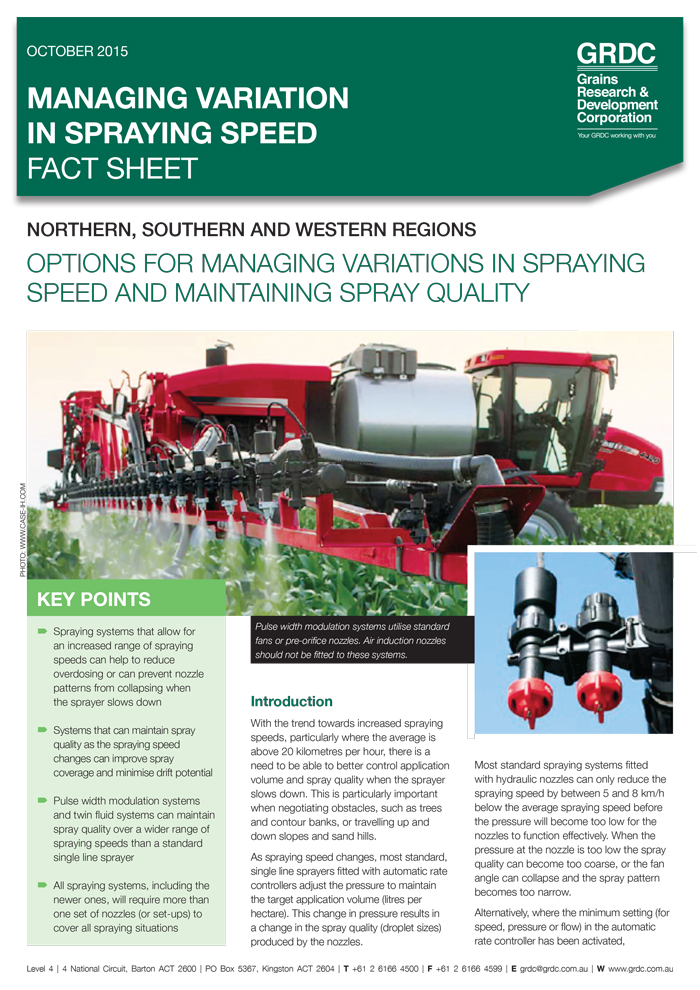Managing variation in spraying speed
Published: 1 Oct 2015

Managing variation in spraying speed fact sheet
Options for managing variations in spraying speed and maintaining spray quality
With the trend towards increased spraying speeds, particularly where the average is above 20 kilometres per hour, there is a need to be able to better control application volume and spray quality when the sprayer slows down. This is particularly important when negotiating obstacles, such as trees and contour banks, or travelling up and down slopes and sand hills.
As spraying speed changes, most standard, single line sprayers fitted with automatic rate controllers adjust the pressure to maintain the target application volume (litres per hectare). This change in pressure results in a change in the spray quality (droplet sizes) produced by the nozzles.
Key points
- Spraying systems that allow for an increased range of spraying speeds can help to reduce overdosing or can prevent nozzle patterns from collapsing when the sprayer slows down
- Systems that can maintain spray quality as the spraying speed changes can improve spray coverage and minimise drift potential
- Pulse width modulation systems and twin fluid systems can maintain spray quality over a wider range of spraying speeds than a standard single line sprayer
- All spraying systems, including the newer ones, will require more than one set of nozzles (or set-ups) to cover all spraying situations
Want to link to this publication?
Use www.grdc.com.au/GRDC-FS-ManagingSprayingSpeedVariations
Region North, South, West
Region: North; South; West
Was this page helpful?
YOUR FEEDBACK
